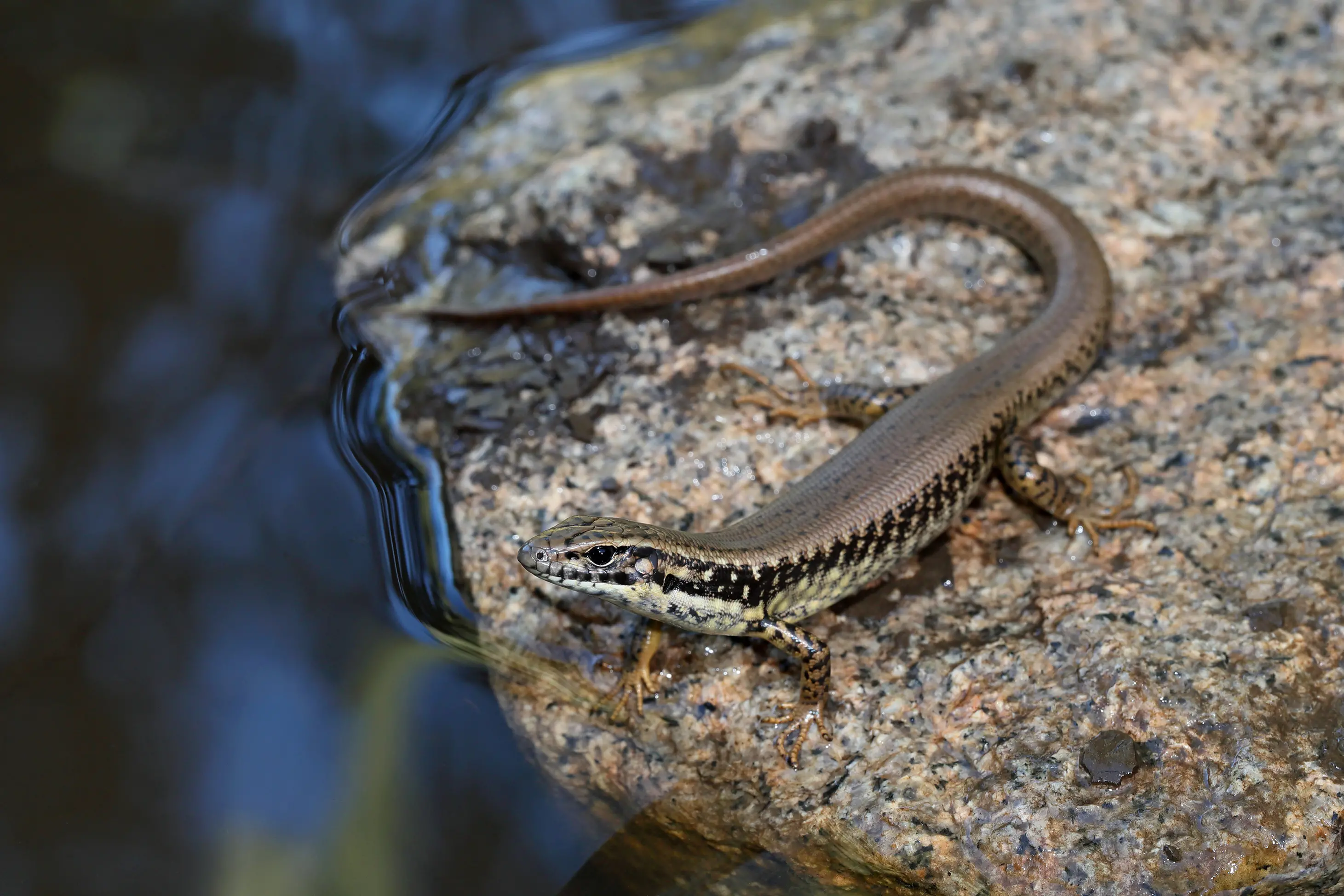PHOTO
54695.0
The Yellow-bellied Water Skink is one of the few reptiles in the North East region that live along our waterways rather than in drier forest and woodland environments.
As its name suggests, it prefers to live right beside the water along rivers, creeks and associated wetlands and billabongs.
In this region, Yellow-bellied Water Skinks are typically found in fringing aquatic habitat in red gum forests.
They are most common where there are numerous logs, fallen branches and exposed rocks that provide suitable opportunities for them to bask within close proximity to water.
Yellow-bellied Water Skinks are easily recognised from other skinks locally as they have a distinctive bright yellow underside, a cream throat, bold black patches which form a broad irregular stripe down their sides, and a coppery-bronze head, back and tail.
Their backs have an almost chequered appearance of black flecks against a bronze background.
Adults can be over 20+ cm in total length which is much larger than other skinks sharing the same habitat.
Yellow-bellied Water Skinks are active during the day in warm weather when they feed on a wide variety of insects and sometimes small vertebrates such as frogs and smaller skinks.
Most prey is captured from grassy vegetation, leaf-litter and amongst fallen timber close to the water, but prey can also be taken from the water.
During the day in spring and summer, they may be found basking on exposed sunny surfaces of logs or rocks, seeking shade or dappled light during the warmest part of the day.
If disturbed while basking, they will readily plunge into water as they are good swimmers or alternatively seek refuge in a nearby crevice or under fallen bark or debris, emerging to resume basking shortly after the danger has passed.
In cool weather, they hibernate deep in rock crevices, cavities in river or creek banks, or hollow logs.
Although they are usually found in loose colonies of multiple individuals, they can be quite aggressive to one another in defence of a territory.
Males can also aggressively guard their female mates from rival males by chasing them off and performing a display of head bobbing to signal dominance.
Mating occurs in early spring, after which females give birth to two to eight live young in summer or early autumn.
In Wangaratta throughout the warmer months, they can often be seen basking on logs along the Ovens River or even man-made structures like the fishing platforms behind Faithfull Street catching the sun in the mornings.





